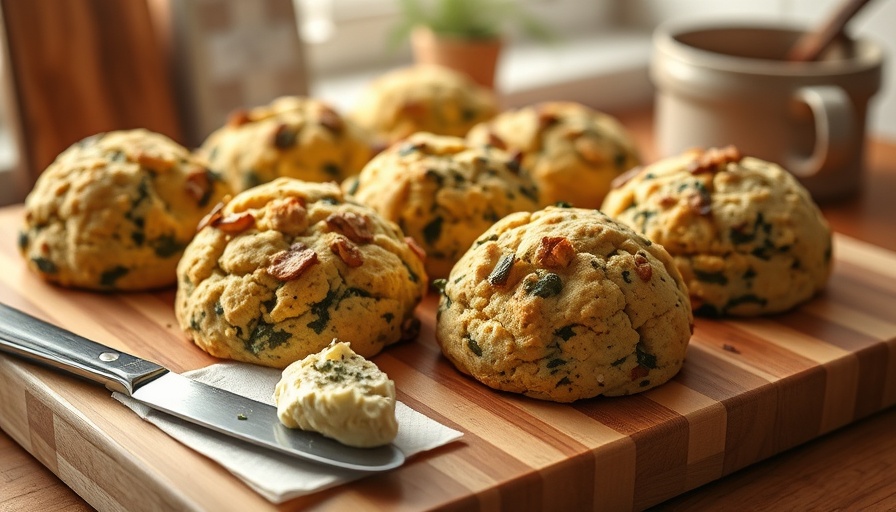
Unlocking the Ocean's Flavors: Seaweed and Scones
Imagine a culinary experience that transports you straight to the seaside, with each bite offering a taste of the ocean's bounty. Seaweed, often overlooked in mainstream cooking, is making waves in gourmet kitchens across the globe. Not only does it bring a burst of flavor, but it also packs a nutritional punch. The fusion of seaweed scones and herb butter embodies this exciting trend, allowing families to explore the extraordinary taste of the ocean without leaving their homes.
Nutritional Treasure: Why Seaweed is a Superfood
As the culinary world rediscovers this ocean delight, parents are finding it easier to introduce superfoods into their family meals. Seaweed, rich in vitamins and minerals, has been utilized in traditional diets for centuries, especially in Asian cuisine. It boasts a high concentration of iodine, calcium, and omega-3 fatty acids—all essential for growing kids. Incorporating seaweed scones into family brunches not only tantalizes taste buds but also elevates your family's nutrient intake.
Bringing the Ocean to Your Kitchen: A Simple Recipe
Making seaweed scones may sound complicated, but it is surprisingly simple! Here’s a quick recipe that even the busiest parents can manage:
- Preheat your oven to 200°C (390°F).
- Mix together 200g of flour, 1 tsp of baking powder, and a pinch of salt.
- Stir in 30g of finely chopped dried seaweed, like nori or dulse.
- Add 100ml of milk and 50g of butter, knead until smooth.
- Form into scones and bake for 15 minutes until golden brown.
Serve with herb butter made from your favorite fresh herbs blended into soft butter for an extra layer of flavor. Your family will love this unique twist on a classic treat!
The Sea Change: Trends in Seafood Dining
In recent years, there’s been a noticeable shift in how families perceive seafood. As sustainability becomes a priority, consumers are increasingly looking for eco-friendly options. Seaweed not only supports oceanic health but is also a sustainable source of nutrition. This shift is reflected in dining trends, with many restaurants now embracing local and sustainable seafood, such as seaweed, to craft innovative dishes that cater to health-conscious families.
Final Thoughts: The Importance of Culinary Exploration
As we dive into new culinary trends, it’s essential to encourage our families to explore beyond traditional ingredients. Trying new recipes like seaweed scones is an opportunity to educate young minds about the importance of health, sustainability, and cultural diversity in food. So, why not embark on this culinary adventure together?
 Add Row
Add Row  Add
Add 




Write A Comment